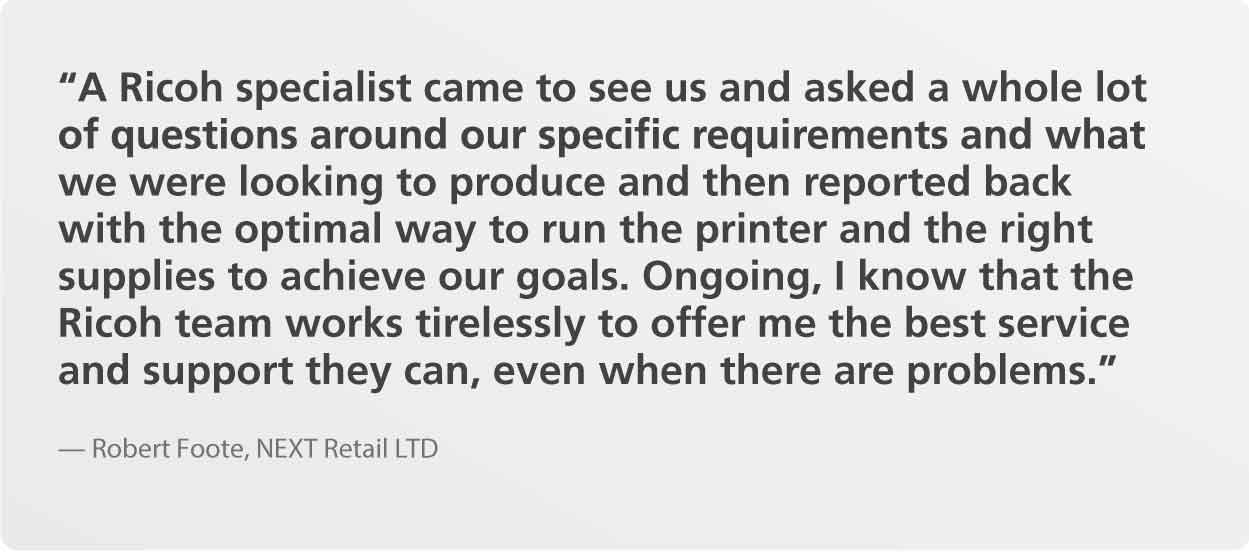Logistics is a crucial part of any company’s operations but lacks the pizzazz and mindshare given to other parts of the business like sales and marketing. Yet logistics plays a critical role ensuring goods and services are produced and delivered on-time to the correct recipient — making or breaking the customer experience. Logistics is the backbone of supply chain management, involving the planning, implementing, and controlling of goods movement and storage. From shipping labels to instruction sheets, print is vital for keeping that supply chain humming along. In fact, any printed material that is essential to the successful completion of a process across the supply chain is defined as critical print and ensures timely and accurate information flow across the supply chain.

Three Ways Critical Print Smooths Logistics
Critical print is necessary across most parts of a company’s supply chain including labeling, invoicing, tracking, compliance, and personalized communications. The efficiency and automation within any supply chain are only as good as the weakest point, often overlooked in printing processes. Too often printing a label or shipping manifest requires a person to step in, retrieve the information from one business system and transcribe that information into another system for printing. Integrating information and systems for the various forms of critical print can increase productivity, reduce overall costs, and improve the continuity and traceability of the overall supply chain.
1. Increasing productivity
By ensuring that necessary documents are available when and where needed, critical print helps streamline operations, reducing waiting times and enabling faster decision-making. Integrating business data across systems eliminates errors from re-keying information like shipping addresses while removing labor and expertise from the processes. Increasing automation, where possible in logistics, eases staffing difficulties by deskilling the job requirements.
2. Reduction of overall costs
Streamlining document processes through critical print minimizes waste and reduces the need for expensive, expedited shipping, leading to significant cost savings. Implementing just-in-time printing that eliminates the need for storage and warehousing also contributes to substantial cost savings.
3. Continuity and traceability of processes
Critical print happens across interconnected supply chains. A system to link with print suppliers for product manuals, instruction sets, disclaimers, and warranties ensures continuity and performance in logistics. As a result, essential documents are always available, supporting uninterrupted business operations and chain of custody for tracking and traceability for compliance, audits, and source of origin when required.

Critical Print in Action
In action, critical print supports four distinct logistics challenges: print at the point of need, enablement for distributed printing, process improvement, and enhanced customer communications. On-demand printing can be applied in-line with the manufacturing process or near-line running in parallel. The various label applications, from product labeling to shipping labels, are good examples of in-line printing, while more complex printing, like instruction manuals can be printed near-line to be ready at the point of need. Printing at the point of need removes warehousing and shipping costs, along with waste due to obsolescence.
There are advantages in distributed print that could involve placing printing devices alongside manufacturing lines, in warehouses, at distribution centers, or outsourced to third-party print service providers. By doing so, businesses can improve their responsiveness, reduce waste and redundancy, and adapt more quickly to changes in demand or supply chain conditions. Distributing print to the most capable source with delivery at the point of need are methods for process improvement by embedding the critical print process directly into the overall logistics path. On-demand printing can also improve communications with customers through versioning for multiple languages and personalizing content or offers to the individual.
Ricoh Solutions for Logistics – NEXT
NEXT Retail traces its origins back to 1864 with the founding of J Hepworth & Son, Gentleman’s Tailors in Leeds, England. Through many acquisitions and organic expansion, the company now encompasses more than 700 stores with an extensive eCommerce presence spread across fourteen distribution centers. NEXT approached Ricoh to consult and implement improvements to its logistics program through innovative solutions for critical print.

Specifically, NEXT sought to extend online ordering hours, enhance order pick-and-pack operations, leverage inventory and shipping from retail stores and improving overall customer satisfaction. Ricoh’s solution included the integration of data across business systems that led to re-engineering several pieces of critical print.
Specifically, shipping labels and documents were reduced by 50% to an A5 format size, which resulted in faster printing and annual cost savings of £1M annually. Other enhancements included the ability to fulfill orders from the existing warehouses, as well as the network of retail stores, which is particularly useful during peak seasons.
Other improvements included:
- Automated processing of 1M dispatch notes per week reducing time from order to print in just 3 seconds
- A reduction of call center volume by 40% by allowing customers self-service access to statements
- The new logistics workflow released $875M of stock “trapped” in closed stores during COVID
With the help of Ricoh services and solutions, NEXT met all of the goals, greatly increasing customer satisfaction along several metrics. Customers gained additional hours to place orders, the ability to review statements online, and better insight into the number of parcels and timing of shipped orders. The company benefited from reduced operational costs and better operation and utilization of existing warehouses and retail storefronts. The changes increased the capacity and flexibility for its eCommerce operations, setting it up for the next 100 years.